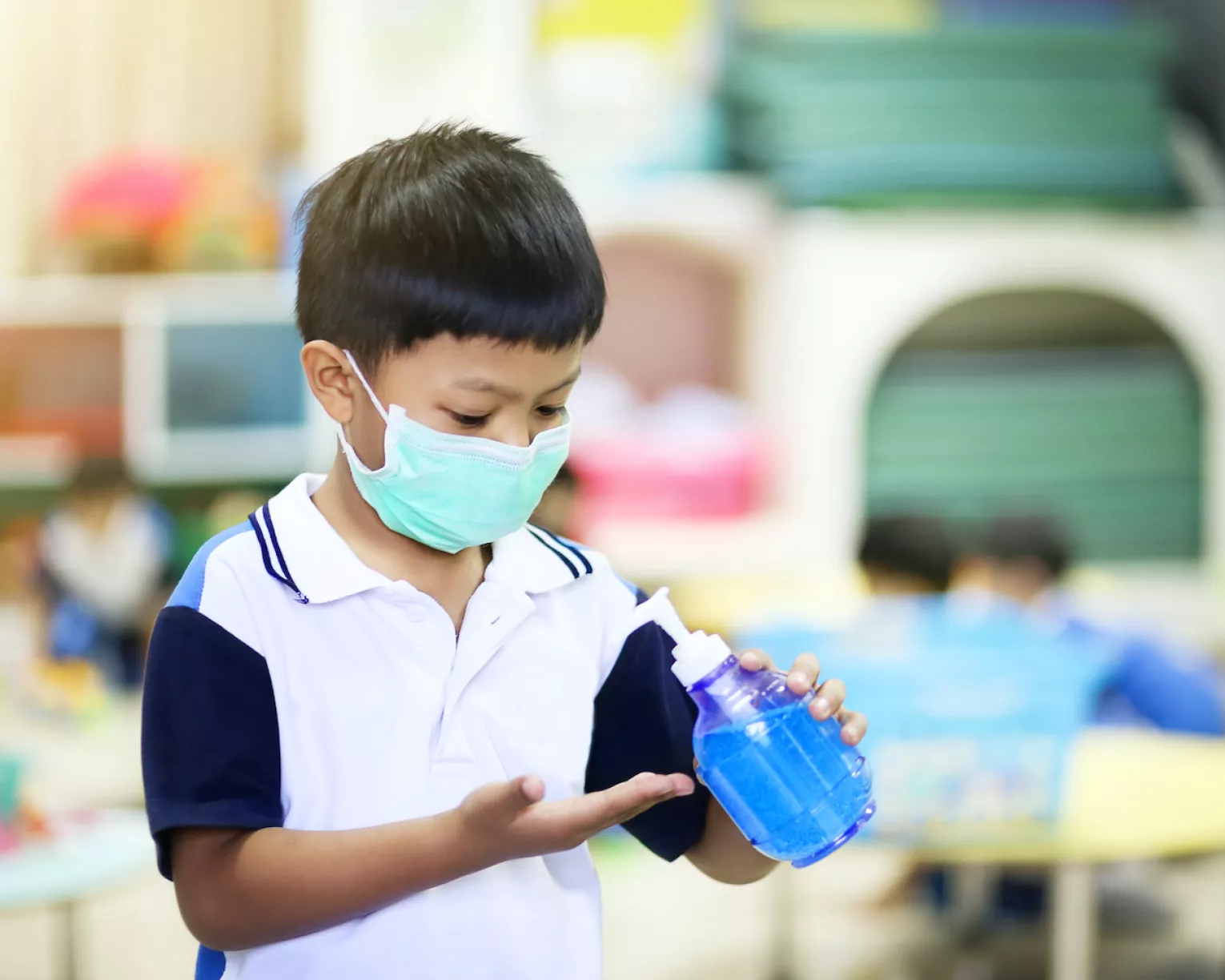THE IMPORTANCE OF GOOD HAND HYGIENE.*
The ED Handbook is clear: “Good hand hygiene—regular handwashing with soap and water for at least 20 seconds or using an alcohol-based hand sanitizer with at least 60 percent alcohol if soap and water are not readily available—reduces the spread of germs that can cause illness, especially if done at key times throughout the day.” CDC provides additional guidance on when and how to wash hands.
THE CORE PRINCIPLES FOR HYGIENIC PRACTICES.*
The CDC identifies teaching students about hygienic practices and providing adequate supplies as the core principles of hygienic practices. In CDC’s own words, here is how the guidance breaks it down.
- Teach and reinforce handwashing with soap and water for at least 20 seconds and increase monitoring to ensure adherence among students, teachers, and staff. Schools can explore options for curricular integration, such as in health and science lessons.
- Encourage students and staff to cover coughs and sneezes with a tissue when not wearing a mask and immediately wash their hands after blowing their nose, coughing, or sneezing.
- Provide assistance with handwashing and respiratory etiquette behaviors for students with disabilities who are in need.
- Support healthy hygiene behaviors by providing adequate supplies, including soap, a way to dry hands, tissues, face masks (as feasible), and no-touch/foot-pedal trash cans. If soap and water are not readily available, schools can provide alcohol-based hand sanitizer that contains at least 60 percent alcohol (for staff and older children who can safely use hand sanitizer).
For more information, review the CDC guidance and ED Handbook.
HOW TO CREATE SAFE, JUST & HEALTHY SCHOOLS
Ensuring our school communities are safe, just, and healthy places to learn not only protects us from the spread of COVID-19 but also helps us improve school conditions so that our students, educators, and staff—whether Black, brown, or white, Native or newcomer—can thrive. Together, we can advocate for the schools our students, educators, and communities deserve.
Ensuring good hygiene practices at schools takes all of us—students, educators, staff, and families—working together. School leaders must provide essential information about policies and resources clearly and in multiple formats and languages so that the entire school community can support its collective health and well-being. This includes all school protocols and signage.
By coming together to demand safe, fully resourced schools, we can prevent unnecessary illness and save countless lives. Policymakers must ensure all students—regardless of race or place—are provided the supplies needed, as indicated by CDC, to achieve healthy and safe learning conditions that do not hinder COVID-19 responses.
NEA MEMBERS: ACT NOW
Coordinate with your local association to ensure collective bargaining agreements (CBAs) are followed or revisions are negotiated, as needed, to address responsibilities, protocols, student education, and supplies.
If you are not covered by a CBA, seek opportunities to work with school administrators to ensure steps outlined here are adopted. In either case, make sure that educators are included in the development, implementation, and review of COVID-19 responses.
Contact your state-elected officials and district leaders and demand that your school receives the necessary funding for health and safety materials, supplies, and training.
Share this guidance with your fellow educators and school leaders.
*Based on the CDC guidance and ED Handbook.
Join Our Movement


